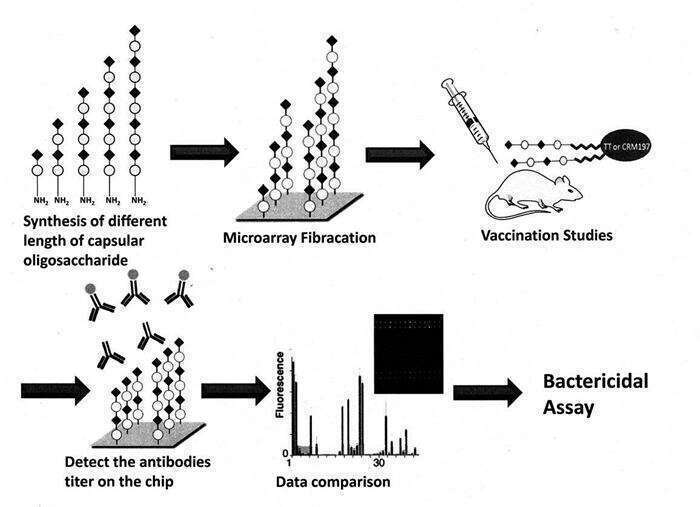Meningococcal diseases are prevalent, especially for children under two-year-old, in developing countries such as China and Africa. The meningococcal meningitis and meningococcal septicemia are caused by Nesseria meningitides, a type of gram-negative bacteria. Based on their surface capsular polysaccharide, they are classified into 13 serogroups, while group A, B, C, Y, and W135 are major epidemic strains. The capsular polysaccharide was acquired from lysis of the bacteria to develop and manufacture the vaccine. However, the composition was heterogeneous even after purification. To obtain the homogeneous form of oligosaccharide, we developed a chemical strategy to synthesize Nesseria meningitides W135 capsular oligosaccharide in high α-stereoselectivity. To investigate the relationship between oliogsaccharide length and their immunogenicity, the oligosaccharide was prepared from disaccharide to decasaccharide, and all of them were conjugated to the carrier protein CRM197, a mutated diphtheria toxin (DT), to improve the immne respone. Furthermore, we applied glycan microarray, a sensitive and sample-saving tool, to monitor the elicited antibody specificity and their subclasses. Finally, we carried out the bactericidal assay to confirm the efficacy of total synthetic vaccines and got very promising results.


